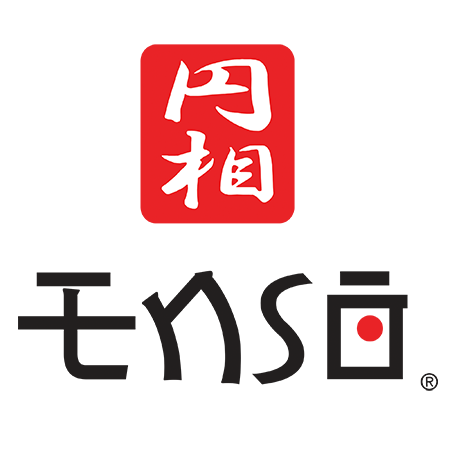How to easily make Maki at home
Fallen in love with Japanese sushi maki and cannot get enough of it? The good news is that making maki is not difficult or complicated as it looks and you can easily cook it at home.
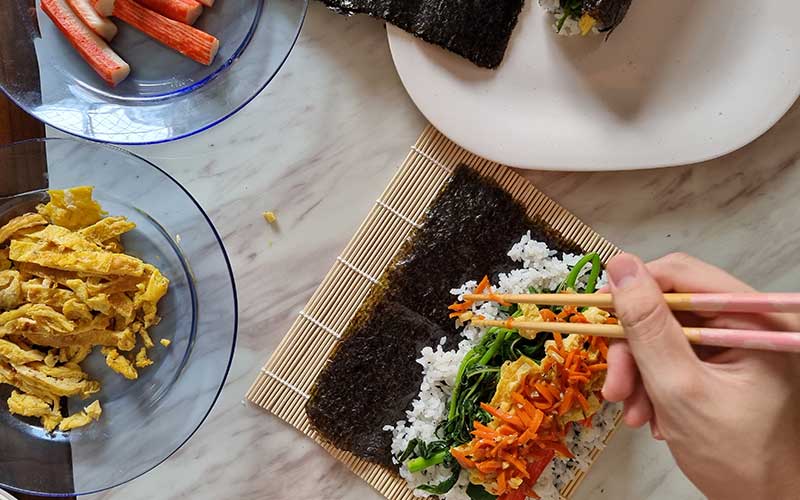
What is maki?
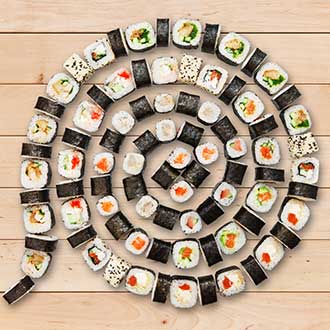
Maki (also known as sushi maki, norimaki) is Japanese sushi rolls. It features sushi rice and additional ingredients in the middle, wrapped together in roasted nori seaweed, with help from a bamboo mat to roll them.
Maki is usually stuffed with fish, vegetables, and cut into six to eight bite-sized pieces.
Maki can take many forms, whether small or large, hand-rolled or use a bamboo mat. It can be made as an appetizer or a main dish, and is typically served with soy sauce dipping and pickled ginger.
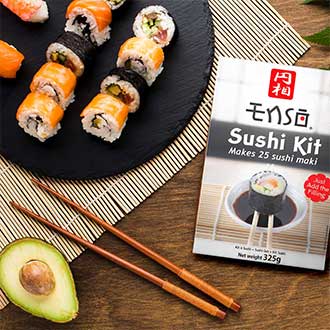
Maki is commonly wrapped in nori seaweed, but sometimes the chef may use a thin omelet, soy paper, cucumber, or Shiso (perilla) leaves as an alternative.
Short-grain white rice is typically used, however, other types of rice like short-grain brown rice or black rice are also gaining popularity.
The nori seaweed may be brushed with sesame oil or sprinkled with sesame seeds to enhance more flavors.
The common ingredients of maki are raw fish, crabsticks, avocado and cucumbers, but some other varieties may include cheese, spicy cooked squid, yakiniku (grilled meat), kamaboko (Japanese fish cake), lunch meat, sausage, bacon or spicy tuna.
4 types of maki
With all the variations of how to fill and roll Japanese sushi, there are many types of maki available. However, here are the 4 most popular types of maki.

Futomaki (meaning “large or fat roll”) is a large, cylindrical style of sushi, usually containing seasoned rice and multiple fillings with nori on the outside.
Futomaki is rolled in a bamboo sushi mat and then sliced crosswise into rounds. They are often made with two, three, or more fillings mixed between vegetables and meats. Vegetables usually include cucumbers, lettuces, and pickled radish or bamboo shoot.
The popular proteins are fish cakes, crab meat, egg, tuna, or shrimp. This type of sushi rolls is very popular and sometimes just called maki.
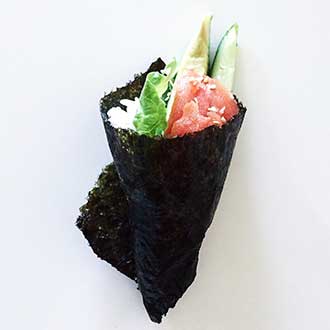
Temaki, translated as ‘hand roll sushi’, is a large cone-shaped style of sushi with nori on the outside and the ingredients spilling out the wide end.
It usually consists of rice, raw fish, boiled prawn, fish eggs, egg rolls and vegetables like cucumbers, avocado, radish sprout, Shiso leaves or Takuan (yellow daikon pickles).
Cone-shaped temaki is rolled by hand and designed to be eaten by hand.
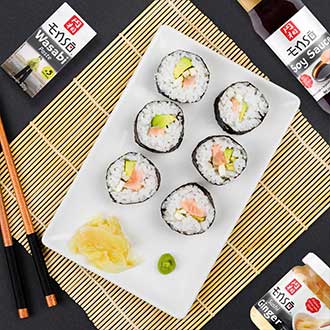
Hosomaki means “thin roll” in Japanese.
Hosomaki is a type of small cylindrical sushi, with nori on the outside.
Hosomaki commonly contains only one or two ingredients often tuna, Yellowtail fish, cucumber, umeboshi paste, and squid with Shiso leaves.

Uramaki means “inside-out roll” in Japanese. This maki is a medium-sized cylindrical style of sushi which differs from other types of maki above because the rice is on the outside and the nori inside.
It usually contains two or more fillings in the center, surrounded by nori, then a layer of rice. The outer layer of rice can be coated with some other ingredients such as roe or toasted sesame seeds to make it less sticky.
The popular fillings include tuna, crab meat, avocado, mayonnaise, cucumber or carrots. The California roll is a well-known example of uramaki.
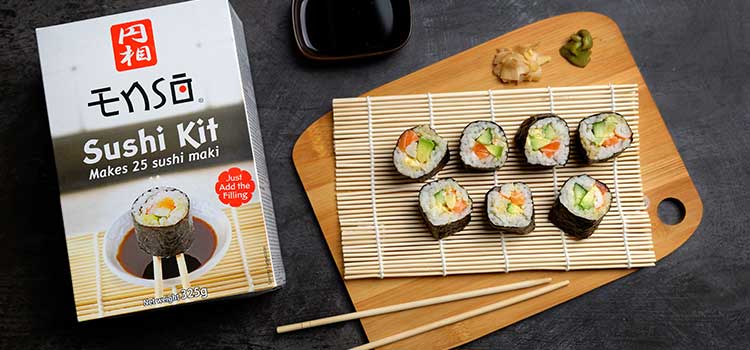
How to make maki at home
Making maki can be an art, but it is not too complicated to do at home. Here are some steps to cooking sushi rolls at home. Most ingredients and cooking methods are similar, but have different fillings and rolling methods.
Equipment
- A rice cooker or any rice cooking tools of your choice. Every sushi recipe starts with freshly steamed, seasoned rice.
- A bamboo rolling mat or Makisu. The mat is used to roll sushi, but it can be used to shape other soft foods such as omelets, and to squeeze excess liquid out of food. So it is quite a handy tool if you cook Japanese food often.
- A chef’s knife, a cutting board and a bowl of water
Ingredients:
- Short grain rice. The rice has to be short-grain rice as it has to be sticky and forms together when you wrap the nori seaweed around it.
- Nori Roasted Seaweed. The seaweed used for making sushi maki is called Nori Seaweed. It usually comes in ready-to-use sheets, so quite convenient for making maki. The good quality nori is pure, dark green or black, shiny, and not brittle or easily broken.
- Rice vinegar. Sprinkle a few drops over cooked Japanese rice before making sushi and maki, the vinegar helps improve the flavor of the rice.
- Sugar and salt. To season steamed rice.
- Fillings. Proteins and vegetables of your choice and depending on the type of maki. Popular proteins for most maki are raw salmon, tuna, boiled prawn, fish eggs. Popular vegetables include cucumber, avocado, Shiso leaves or Takuan (yellow daikon pickles).
- Soy dipping sauce, pickled ginger, and wasabi paste. To serve with maki as condiments.
Tips: For beginners, you can save your time to find the right ingredients (except for fresh ingredients like meat and vegetables) by buying a ready-to-cook Sushi set.
Also you can save some money not buying unnecessarily large size products if you do not cook Japanese food regularly.
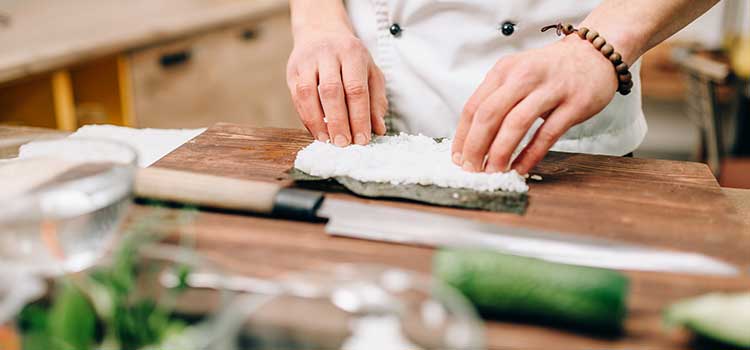
5 easy steps to making maki
Step 1: Make sushi rice.
Start cooking your rice using a rice cooker or place sushi rice in boiling water and cook for 15-20 minutes. If you cook it in a pot, drain well and allow the rice to cool down. Then season with rice vinegar, sugar, and salt.
Step 2:
Prepare the fillings. Slice raw fish, crabsticks into long thin sticks of the same match. If you use raw fish, select the sushi or sashimi grade for better quality and taste. Cut avocado in thin slices and other vegetables like cucumber or daikon into match sticks.
Step 3:
Prepare the rolls. If you make any type of maki other than Temaki (hand rolls or cones), you will need a bamboo sushi mat. Place one sheet of seaweed on the bamboo mat and spoon a quarter of the cooked rice into the center. Spread the rice to cover the sheet (leave 2 cm margin on the 2 sides). Spread mayonnaise on top of rice then add salmon, crabsticks, avocado and cucumber.
Step 4:
Wrap the rolls. Roll the mat over the seaweed sheet. Start with the edge closest to you, use the mat to help you roll the sushi into a neat log. Seal with a little of water.
Step 5:
Plate your dish. Cut each roll into 6 to 8 pieces. Serve with soy sauce, wasabi paste and sushi ginger.
You can check our Enso recipe page to learn how to make Sushi Maki and how to roll Temaki cones and other Japanese dishes which are easy to make at home.
